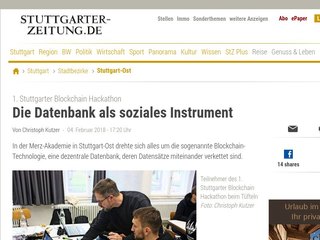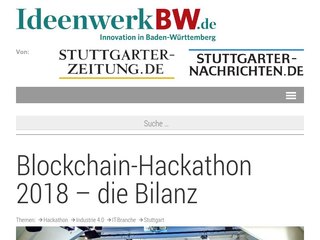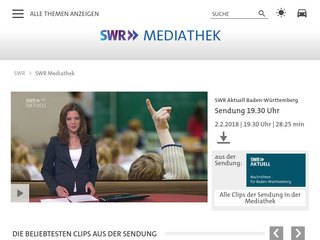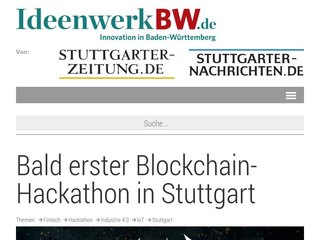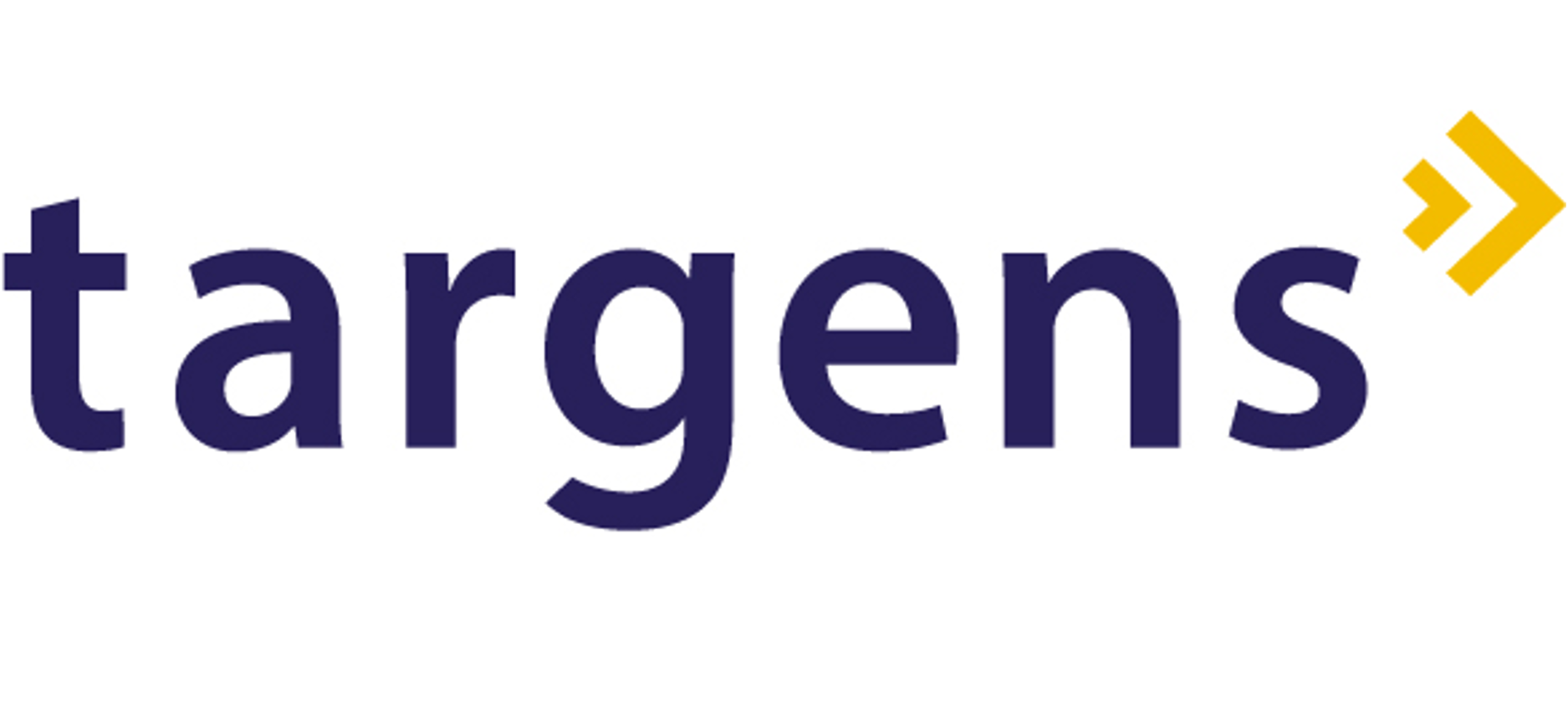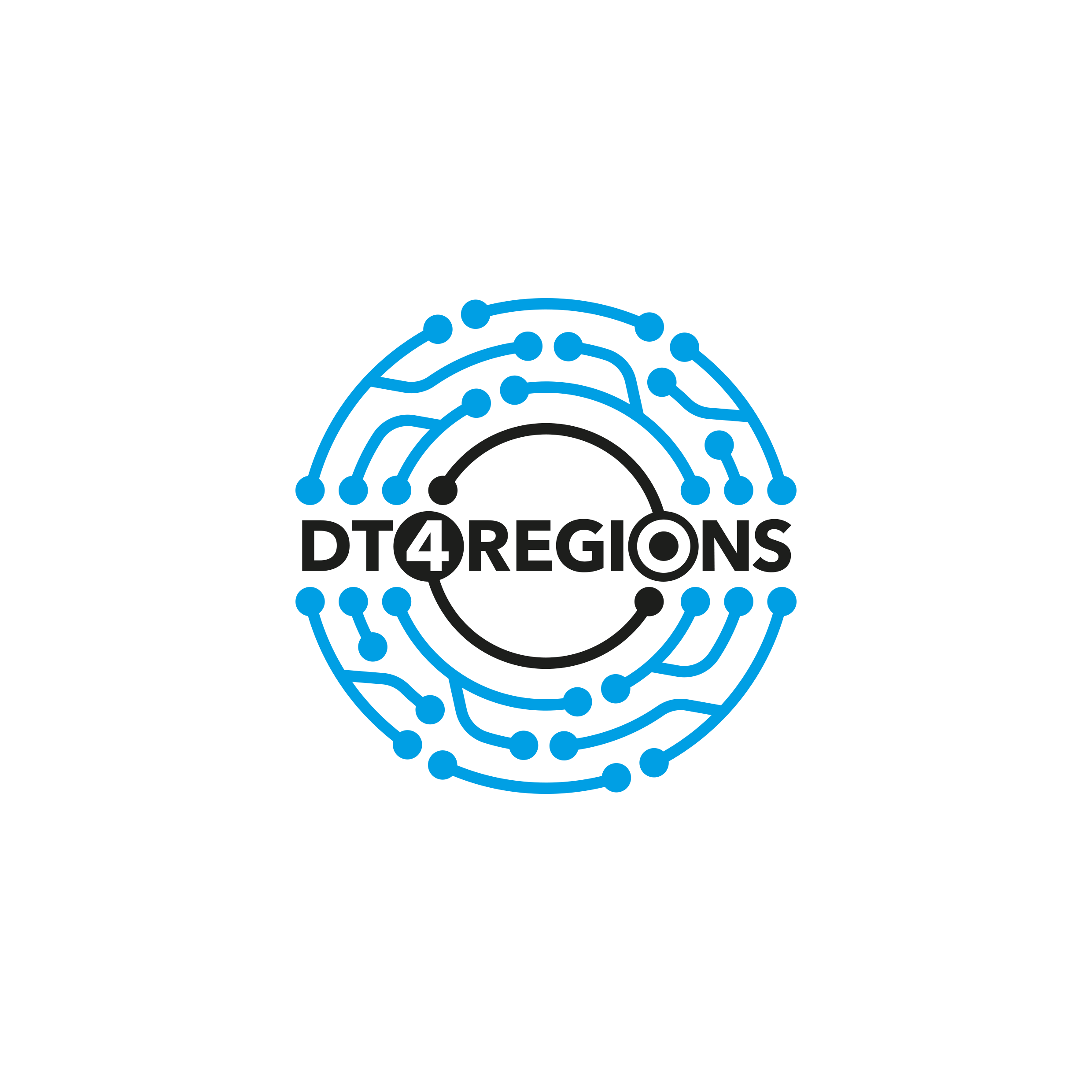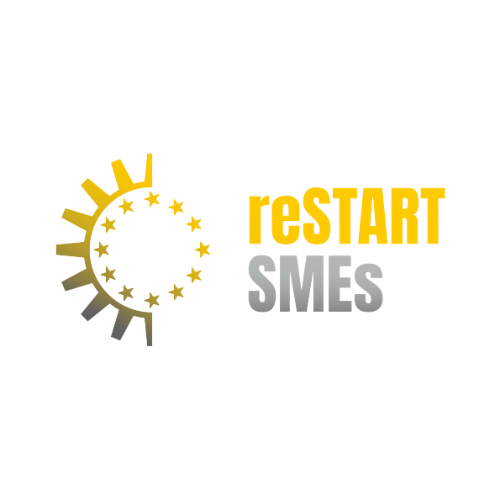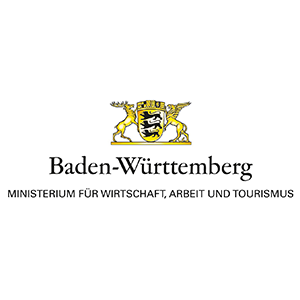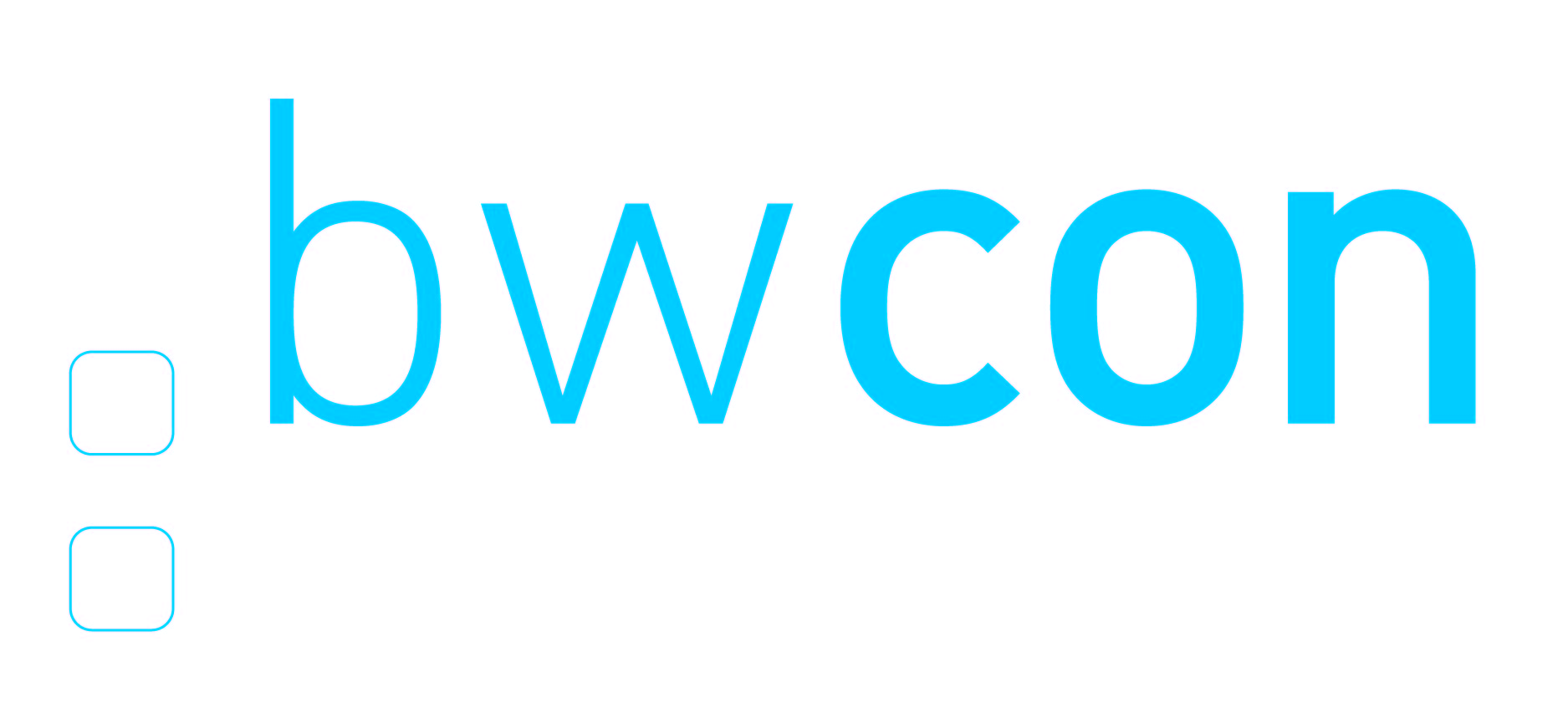Impressions from the 1st Blockchain Hackathon organized in Stuttgart by bwcon on the 2nd-4th February 2018
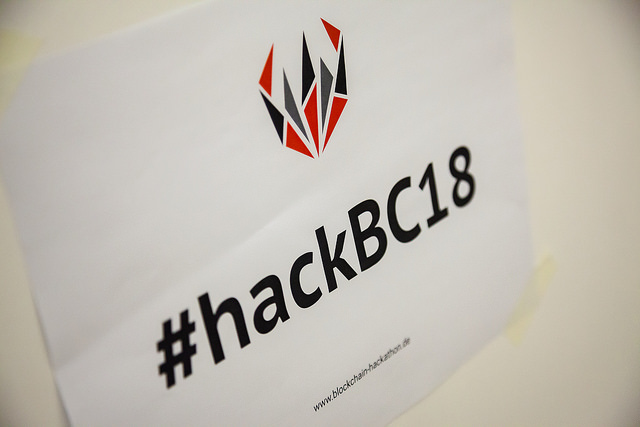
CHALLENGES
These were the challenges within the 1st Blockchain Hackathon Stuttgart
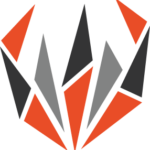
ENVISION THE CRYPTO FUTURE
What happens when Blockchain meets the Internet of Things, Industry 4.0 and Finance? Will the car of the future be community owned as digital asset on a decentralized network? Where will our identity be stored? And where the billions of items of the future Internet of Things? Which new financial solutions can be envisioned? And which new ideas and solutions will come out at the crossroads of different branches?
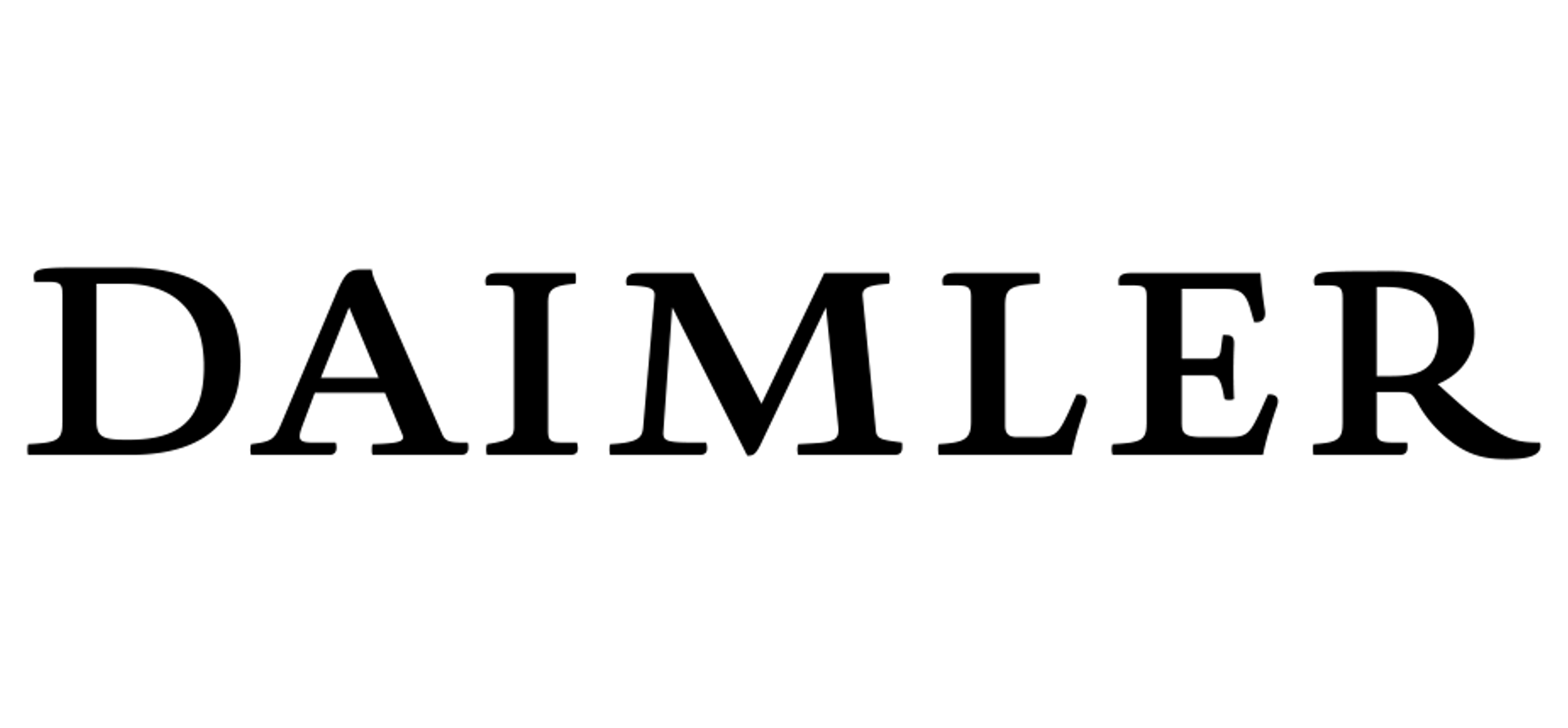
How can Blockchain technology push mobility to the next level?
MOBILITY – Daimler
Autonomous driving is just around the corner. With vehicles becoming fully autonomous, security, legal and administrative challenges need to be solved. In what way can Blockchain technology help?
Read more
Think for example of the following possible scenarios:
- Car2X communication: How should cars communicate with the environment and peer cars? How can an open distributed ledger help by saving and sharing information between cars like location, speed, direction etc. to foster smart mobility?
- Autonomous, self-administrating trucks: once the truck is autonomous it will need to have its own digital identity and an eWallet: It will perform (micro-)payments for fueling, charging, toll etc. But how can the truck decide which business partner is trustable? And when it comes to platooning, how can trucks find a platoon and how can we make sure that benefits in terms of fuel savings are allocated fairly among platooning partners?
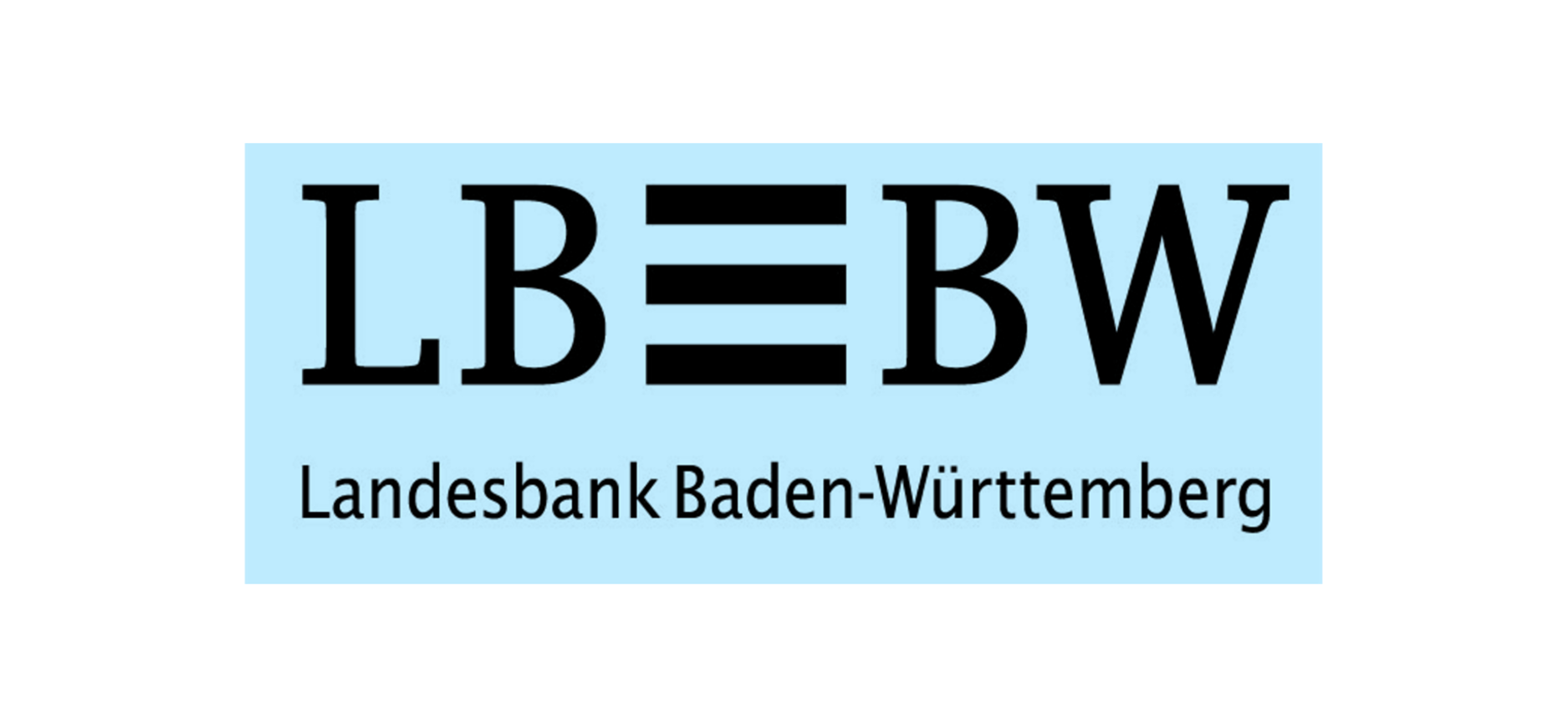
How could banks evolve towards the service & security provider in a tokenized world?
FINANCE – LBBW
We see several starting points in this field. How can blockchain technology help?
- · The Evolution/development of bank services within a digital ecosystem between corporates, their customers and suppliers as well as banks?
- · The combination of corporate business and bank services for a new customer experience?
- · The creation/design of an efficient/customer-orientated end-to-end process (where the customer is the borrower, an investor, a consumer or a corporation)
Read more
Think of these two possible concrete use cases:
- Tokenization of private placements: programming of a digital loan agreement/platform for private placements including fully automatic settlement and execution of payments. The number of investors at the beginning of the distribution is typically undefined and could be large (up to 500).
- Automatic trade receivables management: In a digital ecosystem in which all sales are made online, a sale should be accounted, a bill/notice to pay should be sent and services like the financing of receivables could be done automatically. We want to automate the process of receivables financing i.e. the sale of a trade receivable and the payment should be automatically executed when the claim is accrued.

Which new ways of producing, collaborating and organizing value creation will blockchain technology make possible?
INDUSTRY – BOSCH
The area of manufacturing, intra and inter company logistics, and the way value creation is organized is changing rapidly. Relying on blockchain properties like tokenization, immutability of data, identity and payment solutions:
- · How can manufacturing become more decentralized in terms of location and in ownership?
- · How will logistic play a crucial roles in this process (e.g. drones will provide a new way of allocating hardware)?
Read more
Think about this concrete use case:
- Trust of origin and trust of accuracy: A lift bridge operator collects data from> 100 sensors. These sensor data are sent to the manufacturers of the components of the lifting bridge. Manufacturers run their predictive maintenance analysis on the data and as a result, it is possible to give a statement about the failure probability and duration of the components. This statement is then handed over to an insurer of infrastructure companies. The insurer then assesses when maintenance measures and the associated failure of the lifting bridges can make the most sense. The challenge here is to know when the data comes from a specific provider or device (trust of origin) and when the data we have is reliable (trust of accuracy).
Jury
days
Participants
Teams
Challenges
